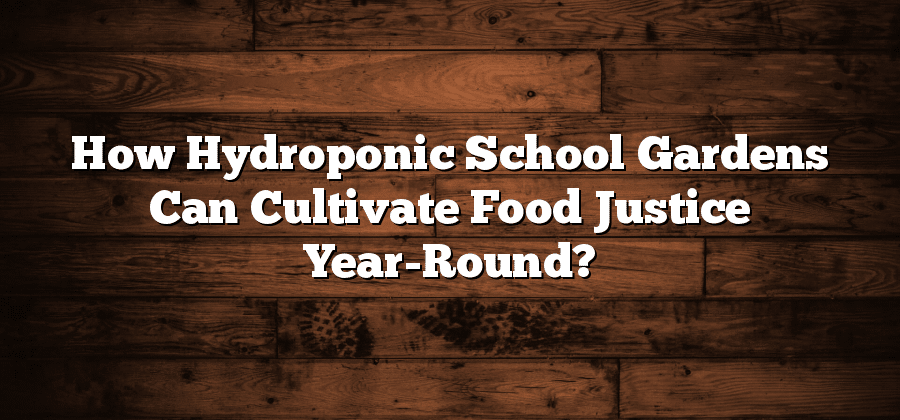Understanding Hydroponics in Education
Hydroponics, a soilless method of growing plants, is becoming increasingly popular in educational settings. This innovative technique allows students to explore the world of agriculture in a controlled environment, offering valuable insights into sustainable food production. With hydroponics, students are able to witness firsthand the entire lifecycle of a plant, from germination to harvest, fostering a deeper understanding of biology, chemistry, and environmental science.
One of the key advantages of incorporating hydroponics into education is its ability to address food insecurity. Many schools are located in urban areas where access to fresh, nutritious food may be limited. By cultivating their own hydroponic gardens, students have the opportunity to grow a variety of fruits and vegetables right on campus, helping to alleviate food deserts and promote healthy eating habits. Moreover, the year-round nature of hydroponics enables schools to produce crops regardless of the season, ensuring a steady supply of fresh produce for their communities. The hands-on experience gained from growing their own food instills a sense of empowerment and self-sufficiency in students, fostering a lifelong appreciation for sustainable agriculture.
Addressing Food Insecurity Through Hydroponic School Gardens
Hydroponic school gardens can play a crucial role in addressing food insecurity among students and the local community. With the ability to grow fresh produce year-round, regardless of the climate or season, these gardens provide a sustainable solution to supplementing food supplies. By utilizing hydroponics, which is a soilless cultivation method that nourishes plants with nutrient-rich water, schools can grow a wide range of fruits, vegetables, and herbs in controlled environments. This allows them to maximize space and resources, resulting in higher crop yields compared to traditional farming methods.
One of the key advantages of hydroponic school gardens is their ability to provide access to fresh, nutritious food in areas where access to healthy options is limited. In many communities, especially those in urban areas, food deserts—areas without quality grocery stores or fresh produce—are a significant issue. By implementing hydroponic gardens in schools, students not only have access to fresh produce for their own consumption but can also contribute to local food banks or sell excess produce to generate revenue for school programs. This empowers students to take an active role in addressing food insecurity in their own communities and promotes healthy eating habits among the younger generation.
Benefits of Year-Round Cultivation in School Gardens
Hydroponic school gardens offer a unique opportunity for year-round cultivation, providing a host of benefits for students and communities alike. By utilizing controlled environments, such as greenhouses or indoor settings, students are able to grow plants regardless of the external weather conditions. This allows for a continuous learning experience, enabling students to observe the entire lifecycle of plants from seed to harvest, regardless of the time of year.
One key advantage of year-round cultivation is the ability to address food insecurity. With a consistent supply of fresh produce available, hydroponic school gardens can contribute to the provision of nutritious meals for students and their families. This not only helps combat food insecurity within the school community but also promotes healthier eating habits among students. Furthermore, by involving students in the entire cultivation process, from planting to harvesting, they gain a deeper understanding of the value and importance of food, fostering a sense of appreciation and responsibility towards sustainable agriculture.
Empowering Students with Sustainable Agriculture Skills
Hydroponics, the practice of cultivating plants without soil, has emerged as a valuable tool for empowering students with sustainable agriculture skills. By integrating hydroponics into the educational curriculum, students are given a unique opportunity to develop a deeper understanding of food production and the environmental impact of traditional farming methods. Through hands-on experiences, students are able to explore the principles of hydroponic cultivation, learning about nutrient solutions, pH levels, and plant growth stages.
One of the key benefits of incorporating hydroponics into the educational system is the year-round cultivation it allows. Unlike traditional gardening, hydroponic systems provide a controlled environment that can be maintained regardless of external weather conditions. This enables students to actively engage in gardening even during the colder months, ensuring a consistent supply of fresh produce throughout the year. Additionally, students gain exposure to sustainable agricultural practices that minimize water usage and reduce the reliance on harmful pesticides and fertilizers. Such hands-on experiences not only promote interest in sustainable farming but also equip students with practical skills that can be applied to future endeavors in the field of agriculture.






